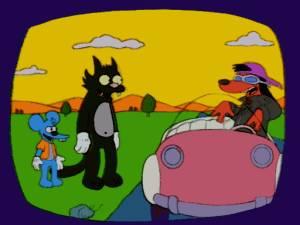After reading Cheri Register’s wonderful memoir / history / creative non-fiction “Packinghouse Daughter”, an examination of her personal experiences, and those of her town of Albert Lea MN during the societal and economic changes of the late 50’s and 60’s, I have been thinking a lot about Batavia. I covered a lot of the same topics in this post from 2009, so I thought I would put it out there again, because if anything, her book reinforced a lot of my opinions on the past, present and future of small town America. I apologize for the post being a bit long and windy, but it’s worth the read (I hope).

After the physical hollowing of downtown
I’m currently reading “Hollowing out the Middle: The Rural Brain Drain and What it Means for America” by Patrick J. Carr and Maria J. Kefalas, two sociologists who spent a few years studying the path to adulthood for young residents of an anonymous small Iowa town. As books on social research go, it is wonderfully accessible and clearly written, making it a very easy and compelling read. For two people who did not grow up in a small town, and are obviously highly educated professionals, I am finding that their portrayal of small town America is remarkably clear eyed, and not prone to the polemic images of rural American’s typically presented by the media. Most stories you read portray rural people as either gun toting, small mined, bigots, or patriotic, “motherhood and apple pie”, pillars of the American dream. Having grown up in Batavia, I find their book to be very sensitive, and deftly written, allowing the residents of “Ellis”, Iowa to reveal themselves as the complex, thoughtful human beings they truly are. It is a much more reserved, and non-committal representation than I could ever produce, having lived the kind of life they studied, and being far too emotionally involved in the subject.
If you are one of the small town Diaspora who left never to return, or someone who left but boomeranged back, it is a very revealing read. Not only do they highlight the demographic, and economic trends effecting rural America, they also catch the subtle undercurrents of class that play a large role in determining the opportunities and futures of the young inhabitants. At times it is also a painful book, pointing out the paradoxes that exist, and how small towns have hastened their own demise, by investing so much of their limited resources in developing their “best and brightest” and encouraging them to leave the community behind. The result is what Patrick Deneen has called the “strip mining” of young adults from rural areas, to feed the coastal, and Midwestern, urban population centers.
As one of the “Achievers” who was groomed to leave, I find myself emotionally conflicted about where I have ended up, and where I began. In some ways that was the main impetus for this blog, and was clearly the thought process behind the title I gave it. I grieve the loss of connection to community and the sense of place, while simultaneously realizing that I could never be happy going back again. As much as I miss the connection to the community, I also revel in the anonymity, and freedom that Urban / Suburban life offers me. I can re-invent myself here, and maintain a privacy that would never be possible in a place where everyone knows my name.
As a parent of two small children, I also look ahead to the future and wonder what inheritance they are receiving as they grow into young adulthood, and look to someday leave for a life of their own. Will they have the same connection to our faceless suburban home, or will they be another rootless generation following the jobs somewhere else. It is when I think beyond my own experience, and look forward and backward at the histories of place, that I begin to see how the issues raised in “Hollowing out the Middle” are both new, and as old as time itself.
Batavia started life as a farming community, founded on a cross roads of Indian trails, where travelers would camp, and take advantage of the (once) clear water flowing down out of the hills. During the 1800’s, it became the local center of government and retail, supporting the surrounding countryside of small family farms. It developed it’s own professional class, and with the coming of the railroads in the later part of the 19th Century, began to experience Industrial growth as factories sprung up to supply agricultural implements like harvesters, and plows to a rapidly growing country.
It was this dawn of the Industrial Revolution in Batavia that first began to change the character of the town, and introduce new demographics, and challenges. First came the Irish immigrants, and later the Sicilian, and Polish, to work the factories. This changed the dynamic of the city, and brought a diversity that does not exist in many small towns in the Midwest, like “Ellis”, Iowa, where German and Scandinavian roots still predominate. For this reason, Batavia developed many little quirks, that came to define the town, as Kauffman points out in his memoir. It is these little quirks that endear the place to me, and make me long for the odd mixture of solidity, and insanity of it’s inhabitants.

Batavia Carriage Wheel Company
As the 19th Century gave way to the 20th, Batavia, and most of Western New York, boomed. These were the years when Massey-Harris (formerly Johnston Harvester), Dohler-Jarvis, and other companies expanded, and the population grew with working class immigrant families. The years before, and after the Second World War were the high water mark for the town. As the 20th Century progressed, the town began to age. A colossally bad decision on the part of the City, to “renew” it’s core by tearing down the 19th Century buildings in downtown, and redeveloping the area into a less dense, suburban landscape of parking lots, and shopping malls changed the look of the place. A literal “hollowing out of the middle”. The disaster that ensued is well documented in Kauffman’s book, but what is often overlooked, is that this Urban Renewal coincided with larger economic trends that were relocating Industrial jobs from places like Batavia, to the Sun Belt, and which would ultimately have a far more lasting effect on the town.

The Johnston Harvester Company - 1896
That process began in 1953 when the Canadian company Ferguson, merged with Massey-Harris (also Canadian). By 1958, production had moved out of the 1883 built factory on Harvester Avenue. In retrospect, that was a harbinger of what was to come as smaller, locally owned Industrial companies combined, and merged into large multinational stock holder corporations all over North America. As the 20th century progressed, other manufacturers opened factories in Batavia, such as Sylvania, and Trojan Industries, and this helped slow the decline. However, during the 70’s and 80’s the same story was to repeat itself with industries consolidating, and the manufacturing plants closing and relocating in lower labor cost regions.

Dohler
Batavia was not alone, these trends hit hard all over the “Rust Belt”, and 1970’s stagflation, and the Oil crisis further exacerbated the problems in an already shaky industrial base. For all the pain that Batavia went through, it was better positioned than many towns in Upstate New York, and across the Northeast. Being 30 miles distant from both Buffalo and Rochester, Batavia took on a new life as a bedroom community, which at least allowed it to support a lower paying service industry. Many towns, like Schenectady, that lived and died on the fortunes of one large employer, saw their tax base collapse, and residents abandoning homes and moving away.

Main Street before it's "renewal"
What these larger trends meant for the young in Batavia, was that good paying blue collar work like their parents had raised their families on, were disappearing. What was left was a shrinking job pool of lower paying service sector jobs, and tougher competition for the fewer professional jobs. A high school graduate intent on pursuing a college education found that they had priced themselves out of the labor market, and had the choice of relocating to an urban area, or being under-employed in Batavia. These conditions were not the result of poor planning, or disastrous urban renewal at the local level. They were the result of much larger forces at work in the global economy.

Destroying the town to save it
So where does that leave places like Batavia and “Ellis”, Iowa? Have the last 100 years of economic history cast their fate in stone? Are they just passing boomtowns that have seen history render them irrelevant? Or have they already reached the bottom, after their 30 year long depression, and sit poised to reinvent themselves?

What the future looked like in the 1970's - Same location as previous 2 photos
Perhaps Batavia history can shed some light on the future. As I have described above, the Johnston Harvester Company was a bellwether for Batavia’s economy in the 19th and 20th Century. In many ways the events that played out on Harvester Avenue were indicative of where the national economy was headed. From it’s opening in 1868 after the Civil War, to takeover by a foreign company (Massey-Harris of Canada) in 1910, to it’s merger with Ferguson and closing of the plant in 1958, the factory on Harvester foreshadowed the future of American Industry. So it is interesting to consider what happened when the building fell vacant.
In the late 50’s and early 60’s the Chamber of Commerce sought out new tenants for the building. When they were unable to find a large manufacturing firm willing to relocate to Batavia the property was sold to city resident Joseph Mancuso. Mancuso came up with the idea to rent portions of the building to smaller manufacturing firms until they were large enough to strike out on their own. He hoped that this type of arrangement would allow startup businesses to save money and resources until they grew enough to move out on their own.
As the legend goes, one of the first tenants to the Industrial Center was a chicken company. Mancuso was traveling around the U.S. looking for other potential tenants and, using the chicken company as an example, he started calling it an incubator. Some people credit Mancuso with inventing the world’s first business incubator, a concept that is often touted in post-industrial towns as one way to revive their economy.
But did it work? The last 30 years of Batavia history has shown that despite some promising tenants through the years, no company was able to sustain that economic growth and provide the type of jobs that the depression of the later 20th century took away. Some companies had success, but were unable to parlay that into longevity.
In my own family, my Mom went to work as the first U.S. employee of German heating and valve component manufacturer Braukmann Controls. I can still remember her picking me up at St. Joe’s, and taking me over to the Industrial Center on Harvester on her bicycle. The “office” where she worked was a cavernous warehouse space in the old Johnston Harvester factory, and one heck of a fascinating place for a 5 year old kid. To entertain me she let me play with the little company labels and stick them all over the bike. I can remember the excitement of watching the teletype machine rumbling to life with messages from Germany, and the dusty smell, and echoing emptiness of the place.
Braukmann expanded throughout the 70’s and relocated to the newly vacated Sylvania plant out on Ellicott Street. By the mid 80’s they had been sold to Honeywell, and had over 100 people working for them. Then history repeated itself, and during one of the late 80’s recessions, Honeywell closed the Batavia plant and moved the production to a plant in Ontario.
Damn Canadians! Why is it always Canadians that are the bane of Batavia? Since the day when Butler’s Rangers camped at the Great Bend of the Tonawanda during their raid into New York, those damn Canucks have been killing us. Is it any wonder they built a Tim Horton’s a mere 100 yards from their campsite? I think not! But I digress…
I am not sure what the answer is to the dilemma of towns like Batavia and “Ellis”. Surely the efforts of people like Mancuso, to re-establish a homegrown, entrepreneurial economic recovery are valiant attempts to stop the hemorrhaging of jobs. However, I think we need to be honest about the likelihood, and scale of such success. Lightning is unlikely to strike Batavia, and make it the birthplace of the “next Microsoft”, but building a diverse, human scaled economy is a worthy goal. Chasing the next Federal Penitentiary, Shiny New Industrial Plant, or Call Center, is merely running from one economic bubble to another.
What does any of this mean for the future of middle American youth in towns like Batavia and Ellis? Is there anything that will turn the tide of the rural “brain drain”, and convince the high achievers to stay behind in their hometowns?I see no current economic trend that gives me any hope that things will change. And as Carr and Kefalas point out in “Hollowing out the Middle” it will also take a fundemental change in the current education system, to stop encouraging so much investment of the educational resources into kids who are the least likely to live in the community. I can hear the educators howling already, should anyone suggest they focus on the underperforming students to better maximize the return on their investment, at the expense of the achievers.
In my opinion, until there are legitimate economic incentives to stay behind, those that can, will continue to leave. Who can fault them? Towns like Batavia and Ellis were founded less than 200 years ago by folks that also left behind their homes to seek out better lives.
Maybe the answer is to be found somewhere in our past. I just wonder how far back we will have to look to see the future.

Main Street Batavia - 1896





























